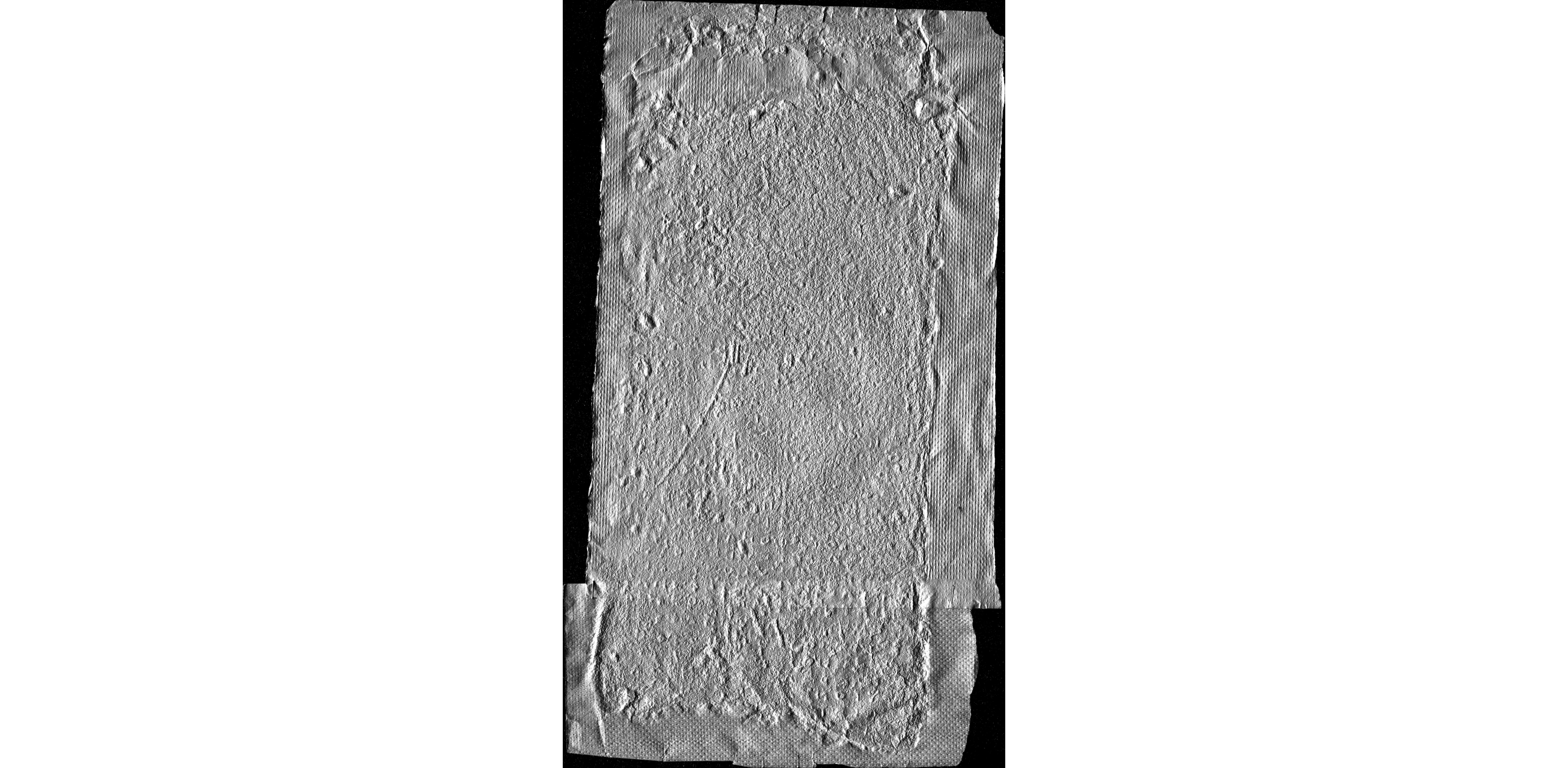AIO = Lambert, S.D.; Osborne, R. Attic Inscriptions Online. URL https://www.atticinscriptions.com/.
AIO = Lambert, S.D.; Osborne, R. Attic Inscriptions Online. URL https://www.atticinscriptions.com/.
Dinsmoor, Archons = Dinsmoor, W.B. (1931). The Archons of Athens in the Hellenistic Age. Cambridge Mass.
Dinsmoor, Archons = Dinsmoor, W.B. (1931). The Archons of Athens in the Hellenistic Age. Cambridge Mass.
IALD II = Lambert, S.D. (ed.) (2018). Inscribed Athenian Laws and Decrees in the Age of Demosthenes. Historical Essays. Leiden; Boston.
IALD II = Lambert, S.D. (ed.) (2018). Inscribed Athenian Laws and Decrees in the Age of Demosthenes. Historical Essays. Leiden; Boston.
IALD = Lambert, S.D. (ed.) (2012). Inscribed Athenian Laws and Decrees 352/1-322/1 BC. Epigraphical Essays. Leiden.
IALD = Lambert, S.D. (ed.) (2012). Inscribed Athenian Laws and Decrees 352/1-322/1 BC. Epigraphical Essays. Leiden.
IG II[2].1.1 = Kirchner, J. (ed.) (1913). Inscriptiones Graecae. Voll. II et III, Inscriptiones Atticae Euclidis anno posteriores. Part 1, Decrees and Sacred Laws. Fasc. 1. Ed altera. Berlin (nos. 1-1369 in fasc. 1 e 2).
IG II[2].1.1 = Kirchner, J. (ed.) (1913). Inscriptiones Graecae. Voll. II et III, Inscriptiones Atticae Euclidis anno posteriores. Part 1, Decrees and Sacred Laws. Fasc. 1. Ed altera. Berlin (nos. 1-1369 in fasc. 1 e 2).
IG II³.1.2 = Lambert, S.D. (ed.) (2012). Inscriptiones Graecae II et III: Inscriptiones Atticae Euclidis anno posteriores. Part I, Leges et decreta. Fasc. 2, Leges et decreta annorum 352/1-322/1. (nrr. 292-386). Berlin.
IG II³.1.2 = Lambert, S.D. (ed.) (2012). Inscriptiones Graecae II et III: Inscriptiones Atticae Euclidis anno posteriores. Part I, Leges et decreta. Fasc. 2, Leges et decreta annorum 352/1-322/1. (nrr. 292-386). Berlin.
IHG = Bertrand, J.-M. (éd.) (2004). Inscriptions Historiques Grecques. Paris.
IHG = Bertrand, J.-M. (éd.) (2004). Inscriptions Historiques Grecques. Paris.
Kirchner, PA = Kirchner, J. (ed.) (1901). Prosopographia Attica. Berlin.
Kirchner, PA = Kirchner, J. (ed.) (1901). Prosopographia Attica. Berlin.
Rhodes - Osborne, GHI = Rhodes, P.J.; Osborne, R (eds.) (2003). Greek Historical Inscriptions, 404-323 B.C. Oxford.
Rhodes - Osborne, GHI = Rhodes, P.J.; Osborne, R (eds.) (2003). Greek Historical Inscriptions, 404-323 B.C. Oxford.
Schwenk, Athens Alexander = Schwenk, C.J. (ed.) (1985). Athens in the Age of Alexander. Chicago.
Schwenk, Athens Alexander = Schwenk, C.J. (ed.) (1985). Athens in the Age of Alexander. Chicago.
Tod, GHI II = Tod, M.N. (a cura di) (1948). A Selection of Greek Historical Inscriptions II. From 403 to 323 B.C. Oxford.
Tod, GHI II = Tod, M.N. (a cura di) (1948). A Selection of Greek Historical Inscriptions II. From 403 to 323 B.C. Oxford.
Tracy, ALC III = Tracy, S.V. (1990). Attic Letter Cutters of 229 to 86 B.C. Berkeley; Los Angeles; London.
Tracy, ALC III = Tracy, S.V. (1990). Attic Letter Cutters of 229 to 86 B.C. Berkeley; Los Angeles; London.
Traill, PAA 4 = Traill, J.S. (ed.) (1995). Persons of Ancient Athens, 4. Auxanon to Gypsinis. Toronto (with Supplement to Volumes 1-3)(=PAA).
Traill, PAA 4 = Traill, J.S. (ed.) (1995). Persons of Ancient Athens, 4. Auxanon to Gypsinis. Toronto (with Supplement to Volumes 1-3)(=PAA).
Traill, PAA 9 = Traill, J.S. (ed.) (2000). Persons of Ancient Athens, 9. Th- to Iooana. Toronto.
Traill, PAA 9 = Traill, J.S. (ed.) (2000). Persons of Ancient Athens, 9. Th- to Iooana. Toronto.
Veligianni, Wertbegriffe = Veligianni-Terzi, Ch. (1997). Wertbegriffe in den attischen Ehrendekreten der klassischen Zeit. Stuttgart.
Veligianni, Wertbegriffe = Veligianni-Terzi, Ch. (1997). Wertbegriffe in den attischen Ehrendekreten der klassischen Zeit. Stuttgart.
Ambaglio, D. (2002). Arriano. Anabasi di Alessandro. I: libri I-III. Milano.
Ambaglio, D. (2002). Arriano. Anabasi di Alessandro. I: libri I-III. Milano.
Badian, E.. s.v. «Thymondas». NPauly 14 http://dx.doi.org/10.1163/1574-9347_bnp_e1213120.
Badian, E.. s.v. «Thymondas». NPauly 14 http://dx.doi.org/10.1163/1574-9347_bnp_e1213120.
Badian, E. (1967). «Agis III». Hermes, 95, 170-92.
Badian, E. (1967). «Agis III». Hermes, 95, 170-92.
Battistini, O.; Charvet, P. (éds.) (2004). Alexandre Le Grand. Histoire ed dictionnaire. Paris.
Battistini, O.; Charvet, P. (éds.) (2004). Alexandre Le Grand. Histoire ed dictionnaire. Paris.
Berve, H. (1926). Das Alexanderreich auf prosopographischer Grundlage, II. Munich.
Berve, H. (1926). Das Alexanderreich auf prosopographischer Grundlage, II. Munich.
Boffo, L.; Faraguna, M. (a cura di) (2021). Le poleis e il loro archivi. Studi su pratiche documentarie, istituzioni e società nell'antichità greca. Trieste https://www.openstarts.units.it/handle/10077/8648.
Boffo, L.; Faraguna, M. (a cura di) (2021). Le poleis e il loro archivi. Studi su pratiche documentarie, istituzioni e società nell'antichità greca. Trieste https://www.openstarts.units.it/handle/10077/8648.
Bosworth, A.B. (1988). Conquest and Empire: The Reign of Alexander the Great. Cambridge.
Bosworth, A.B. (1988). Conquest and Empire: The Reign of Alexander the Great. Cambridge.
Briant, P. (2002). From Cyrus to Alexander: A History of the Persian Empire. Winona Lake, Indiana-Eisenbrauns (ed.orig. Histoire de l'Empire perse. De Darius à Alexandre, Leiden 1996).
Briant, P. (2002). From Cyrus to Alexander: A History of the Persian Empire. Winona Lake, Indiana-Eisenbrauns (ed.orig. Histoire de l'Empire perse. De Darius à Alexandre, Leiden 1996).
Brun, P. (2005). Impérialisme et démocratie à Athènes: Inscriptions de l’époque classique. Paris.
Brun, P. (2005). Impérialisme et démocratie à Athènes: Inscriptions de l’époque classique. Paris.
Brunt, P.A. (1975). «Alexander, Barsine and Heracles». RFIC, 103, 26-7.
Brunt, P.A. (1975). «Alexander, Barsine and Heracles». RFIC, 103, 26-7.
Davies, J.K. (2003). «Greek Archives: From Record to Monument». Brosius, M. (ed.), Ancient Archives and Archival Traditions. Oxford, 323-43.
Davies, J.K. (2003). «Greek Archives: From Record to Monument». Brosius, M. (ed.), Ancient Archives and Archival Traditions. Oxford, 323-43.
De Martinis, L. (2013). «Licurgo fra tradizione e innovazione». Nuova Secondaria Ricerca, 8, 24-54.
De Martinis, L. (2013). «Licurgo fra tradizione e innovazione». Nuova Secondaria Ricerca, 8, 24-54.
De Martinis, L. (2021). «Decreti onorari ateniesi per Eraclide di Salamina». Axon, 5.2, 49-82. https://mizar.unive.it/axon/public/axon/anteprima/anteprima/idSchede/247.
De Martinis, L. (2021). «Decreti onorari ateniesi per Eraclide di Salamina». Axon, 5.2, 49-82. https://mizar.unive.it/axon/public/axon/anteprima/anteprima/idSchede/247.
Faraguna, M. (1992). Atene nell'età di Alessandro. Problemi politici, economici e finanziari. Roma. Atti dell'Accademia Nazionale dei Lincei. Memorie, s. IX, vol. II.2, 165-447.
Faraguna, M. (1992). Atene nell'età di Alessandro. Problemi politici, economici e finanziari. Roma. Atti dell'Accademia Nazionale dei Lincei. Memorie, s. IX, vol. II.2, 165-447.
Faraguna, M. (2020). «Una città in attesa: Atene, Alessandro e la Macedonia tra realtà presente e memoria del passato». ScAnt, 26.3, 51-67. (2020b)
Faraguna, M. (2020). «Una città in attesa: Atene, Alessandro e la Macedonia tra realtà presente e memoria del passato». ScAnt, 26.3, 51-67. (2020b)
Faraguna, M. (2020). «Interplay between Documents on Different Writing Materials in Classical Greece: Paragraphoi and Columnar Formatting
». ZPE, 214, 115-28. (2020a)
Faraguna, M. (2020). «Interplay between Documents on Different Writing Materials in Classical Greece: Paragraphoi and Columnar Formatting
». ZPE, 214, 115-28. (2020a)
Gallotta, S. (2013). «Fra Greci e Persiani: per un riesame della vicenda di Memnone di Rodi». IncidAntico, 11, 119-31.
Gallotta, S. (2013). «Fra Greci e Persiani: per un riesame della vicenda di Memnone di Rodi». IncidAntico, 11, 119-31.
Harding, P. (ed.) (1985). Translated Documents of Greece and Rome, vol. II: From the End of the Peloponnesian War to the Battle of Ipsus. Cambridge.
Harding, P. (ed.) (1985). Translated Documents of Greece and Rome, vol. II: From the End of the Peloponnesian War to the Battle of Ipsus. Cambridge.
Harris, E.M. (2016). «Alcibiades, the Ancestors, Liturgies, and the Etiquette of Addressing the Athenian Assembly
». Liotsakis, V.; Farrington, S.T. (eds.), The Art of History: Literary Perspectives on Greek and Roman Historiography. Berlin, Boston, 145-55. Trends in Classic - Supplementary Volumes 41.
Harris, E.M. (2016). «Alcibiades, the Ancestors, Liturgies, and the Etiquette of Addressing the Athenian Assembly
». Liotsakis, V.; Farrington, S.T. (eds.), The Art of History: Literary Perspectives on Greek and Roman Historiography. Berlin, Boston, 145-55. Trends in Classic - Supplementary Volumes 41.
Hazel, J. (2000). Who's who in the Greek World. London, New York.
Hazel, J. (2000). Who's who in the Greek World. London, New York.
Heckel, W. (2006). Who's Who in the Age of Alexander the Great. Prosopography of Alexander's Empire. Oxford.
Heckel, W. (2006). Who's Who in the Age of Alexander the Great. Prosopography of Alexander's Empire. Oxford.
Heckel, W. (2016). Alexander's Marshals. A Study of the Macedonian Aristocracy and the Politics of Military Leadership. New York.
Heckel, W. (2016). Alexander's Marshals. A Study of the Macedonian Aristocracy and the Politics of Military Leadership. New York.
Heckel, W. (2021). Who's who in the Age of Alexander and His Successors. From Chaironeia to Ipsus (338-301 BC). Barnsley.
Heckel, W. (2021). Who's who in the Age of Alexander and His Successors. From Chaironeia to Ipsus (338-301 BC). Barnsley.
Heckel, W.; Heinrichs, J.; Müller, S.; Pownall, F. (eds.) (2020). Lexicon of Agreed Macedonia (LexAM). Berlin.
Heckel, W.; Heinrichs, J.; Müller, S.; Pownall, F. (eds.) (2020). Lexicon of Agreed Macedonia (LexAM). Berlin.
Hofstetter, J. (1978). Die Griechen in Persien. Prosopographie der Griechen im Persischen Reich vor Alexander. Berlin.
Hofstetter, J. (1978). Die Griechen in Persien. Prosopographie der Griechen im Persischen Reich vor Alexander. Berlin.
Kholod, M.M. (2018). «Achaemenid Grants of Cities and Lands to Greeks: The Case of Mentor and Memnon of Rhodes». GRBS, 58, 177-97.
Kholod, M.M. (2018). «Achaemenid Grants of Cities and Lands to Greeks: The Case of Mentor and Memnon of Rhodes». GRBS, 58, 177-97.
Kuhrt, A. (2007). The Persian Empire. A corpus of Sources from the Achaemenid Period, I. London, New York.
Kuhrt, A. (2007). The Persian Empire. A corpus of Sources from the Achaemenid Period, I. London, New York.
Lambert, S.D. (2007). «Athenian State Laws and Decrees, 352/1-322/1. III: Decrees Honouring Foreigners B. Other Awards». ZPE, 159, 101-54.
Lambert, S.D. (2007). «Athenian State Laws and Decrees, 352/1-322/1. III: Decrees Honouring Foreigners B. Other Awards». ZPE, 159, 101-54.
Lambert, S.D. (2010). «Athenian Chronology 352/1 – 322/1 BC». Tamis, A.; Mackie, C.J.; Byrne, S.G. (eds.), ΦΙΛΑΘΗΝΑΙΟΣ. Studies in Honour of M.J. Osborne. Athens, 91-102. Hellēnikē Epigraphikē Hetaireia 11.
Lambert, S.D. (2010). «Athenian Chronology 352/1 – 322/1 BC». Tamis, A.; Mackie, C.J.; Byrne, S.G. (eds.), ΦΙΛΑΘΗΝΑΙΟΣ. Studies in Honour of M.J. Osborne. Athens, 91-102. Hellēnikē Epigraphikē Hetaireia 11.
Lambert, S.D. (2012). «Inscribing the Past in Fourth-Century Athens». Marincola, J.; Llewellyn-Jones, L.; Maciver, C. (eds.), Greek Notions of the Past in the Archaic and Classical Eras. History without Historians. Edinburgh, 253-75.
Lambert, S.D. (2012). «Inscribing the Past in Fourth-Century Athens». Marincola, J.; Llewellyn-Jones, L.; Maciver, C. (eds.), Greek Notions of the Past in the Archaic and Classical Eras. History without Historians. Edinburgh, 253-75.
Lambert, S.D. (2016). «The Selective Inscribing of Laws and Decrees in Late Classical Athens». Hyperboreus, 22(2), 217-39.
Lambert, S.D. (2016). «The Selective Inscribing of Laws and Decrees in Late Classical Athens». Hyperboreus, 22(2), 217-39.
Landucci Gattinoni, F. (1994). «I mercenari nella politica ateniese dell' età di Allessandro. I: Soldati e ufficiale mercenari ateniesi al servizio della Persia». AncSoc, 25, 33-61. 10.2143/AS.25.0.2005841.
Landucci Gattinoni, F. (1994). «I mercenari nella politica ateniese dell' età di Allessandro. I: Soldati e ufficiale mercenari ateniesi al servizio della Persia». AncSoc, 25, 33-61. 10.2143/AS.25.0.2005841.
Landucci Gattinoni, F. (1995). «L'emigrazione forzosa dei mercenari greci di Alessandro». Sordi, M. (a cura di), Immigrazione e emigrazione nel mondo antico. Milano, 125-40. CISA 21. (1995b)
Landucci Gattinoni, F. (1995). «L'emigrazione forzosa dei mercenari greci di Alessandro». Sordi, M. (a cura di), Immigrazione e emigrazione nel mondo antico. Milano, 125-40. CISA 21. (1995b)
Landucci Gattinoni, F. (1995). «I mercenari nella politica ateniese dell'età di Alessandro. II: il ritorno in patria dei mercenari». AncSoc, 25, 59-91. (1995a).
Landucci Gattinoni, F. (1995). «I mercenari nella politica ateniese dell'età di Alessandro. II: il ritorno in patria dei mercenari». AncSoc, 25, 59-91. (1995a).
Liddel, P. (2007). Civic Obligation and Individual Liberty in Ancient Athens. New York.
Liddel, P. (2007). Civic Obligation and Individual Liberty in Ancient Athens. New York.
Mack, W. (2015). Proxeny and Polis. Institutional Networks in the Ancient Greek World. New York.
Mack, W. (2015). Proxeny and Polis. Institutional Networks in the Ancient Greek World. New York.
Meritt, B.D. (1934). «The Inscriptions». Hesperia, 3.1, 1-114.
Meritt, B.D. (1934). «The Inscriptions». Hesperia, 3.1, 1-114.
Meritt, B.D. (1961). The Athenian Year. Berkeley; Los Angeles.
Meritt, B.D. (1961). The Athenian Year. Berkeley; Los Angeles.
Meritt, B.D. (1964). «Athenian Calendar Problems». TAPhA, 95, 200-60. https://www.jstor.org/stable/283790.
Meritt, B.D. (1964). «Athenian Calendar Problems». TAPhA, 95, 200-60. https://www.jstor.org/stable/283790.
Meritt, B.D. (1976). «Normal Lengths of Prytany in the Athenian Year». GRBS, 17, 147-52.
Meritt, B.D. (1976). «Normal Lengths of Prytany in the Athenian Year». GRBS, 17, 147-52.
Osborne, M.J. (2012). «Secretaries, Psephismata and Stelai in Athens». AncSoc, 42, 33–59.
Osborne, M.J. (2012). «Secretaries, Psephismata and Stelai in Athens». AncSoc, 42, 33–59.
Plontke-Lüning, A.. s.v. «Pharnabazos». NPauly 10 http://dx.doi.org/10.1163/1574-9347_bnp_e918620.
Plontke-Lüning, A.. s.v. «Pharnabazos». NPauly 10 http://dx.doi.org/10.1163/1574-9347_bnp_e918620.
Pritchett, W.K. (1963). Ancient Athenian Calendars on Stone. Berkeley; Los Angeles.
Pritchett, W.K. (1963). Ancient Athenian Calendars on Stone. Berkeley; Los Angeles.
Pritchett, W.K.; Neugebauer, O. (1947). The Calendars of Athens. Cambridge.
Pritchett, W.K.; Neugebauer, O. (1947). The Calendars of Athens. Cambridge.
Rahim Shayegan, M. (2007). «Prosopographical Notes: The Iranian Nobility during and after the Macedonian Conquest». BAI, 21, 97-126.
Rahim Shayegan, M. (2007). «Prosopographical Notes: The Iranian Nobility during and after the Macedonian Conquest». BAI, 21, 97-126.
Raubitschek, A.E. (1942). «Notes on Attic Prosopography». Hesperia, 11.3, 304-13.
Raubitschek, A.E. (1942). «Notes on Attic Prosopography». Hesperia, 11.3, 304-13.
Rung, E. (2016). «Athens, Alexander and the family of Memnon of Rhodes: Some notes on a new interpretation of so-called “Memnon's decree”». Nawotka, K.; Wojciechowska, A. (eds.), Alexander the Great and the East: History, Art, Tradition. Wiesbaden, 51-8. Philippika. Altertumswissenschaftliche Abhandlungen 103.
Rung, E. (2016). «Athens, Alexander and the family of Memnon of Rhodes: Some notes on a new interpretation of so-called “Memnon's decree”». Nawotka, K.; Wojciechowska, A. (eds.), Alexander the Great and the East: History, Art, Tradition. Wiesbaden, 51-8. Philippika. Altertumswissenschaftliche Abhandlungen 103.
Ruzicka, S.. s.v. «Memnon of Rhodes». EAH 8, 4427-8. https://doi-org.ezproxy.unicatt.it/10.1002/9781444338386.wbeah04208.
Ruzicka, S.. s.v. «Memnon of Rhodes». EAH 8, 4427-8. https://doi-org.ezproxy.unicatt.it/10.1002/9781444338386.wbeah04208.
Tarn, W.W. (1921). «Heracles Son of Barsine». JHS, 41.1, 18-28.
Tarn, W.W. (1921). «Heracles Son of Barsine». JHS, 41.1, 18-28.
Walbank, M.B. (1988). «Busy Days in the Athenian Ekklesia». AHB, 2(3), 57-9.
Walbank, M.B. (1988). «Busy Days in the Athenian Ekklesia». AHB, 2(3), 57-9.
Wilhelm, A. (1942). Attische Urkunden. V. Teil. Wien, Leipzig Akademie der Wissenschaften in Wien. Philosophisch-historische Klasse. Sitzungsberichte, 220.5.
Wilhelm, A. (1942). Attische Urkunden. V. Teil. Wien, Leipzig Akademie der Wissenschaften in Wien. Philosophisch-historische Klasse. Sitzungsberichte, 220.5.
Tod, GHI II = Tod, M.N. (a cura di) (1948). A Selection of Greek Historical Inscriptions II. From 403 to 323 B.C. Oxford.
Schwenk, Athens Alexander = Schwenk, C.J. (ed.) (1985). Athens in the Age of Alexander. Chicago.
Rhodes - Osborne, GHI = Rhodes, P.J.; Osborne, R (eds.) (2003). Greek Historical Inscriptions, 404-323 B.C. Oxford.
Tod, GHI II = Tod, M.N. (a cura di) (1948). A Selection of Greek Historical Inscriptions II. From 403 to 323 B.C. Oxford.
Schwenk, Athens Alexander = Schwenk, C.J. (ed.) (1985). Athens in the Age of Alexander. Chicago.
Rhodes - Osborne, GHI = Rhodes, P.J.; Osborne, R (eds.) (2003). Greek Historical Inscriptions, 404-323 B.C. Oxford.
Tod, GHI II = Tod, M.N. (a cura di) (1948). A Selection of Greek Historical Inscriptions II. From 403 to 323 B.C. Oxford.
Schwenk, Athens Alexander = Schwenk, C.J. (ed.) (1985). Athens in the Age of Alexander. Chicago.
Rhodes - Osborne, GHI = Rhodes, P.J.; Osborne, R (eds.) (2003). Greek Historical Inscriptions, 404-323 B.C. Oxford.
Tod, GHI II = Tod, M.N. (a cura di) (1948). A Selection of Greek Historical Inscriptions II. From 403 to 323 B.C. Oxford.
Schwenk, Athens Alexander = Schwenk, C.J. (ed.) (1985). Athens in the Age of Alexander. Chicago.
Rhodes - Osborne, GHI = Rhodes, P.J.; Osborne, R (eds.) (2003). Greek Historical Inscriptions, 404-323 B.C. Oxford.
Schwenk, Athens Alexander = Schwenk, C.J. (ed.) (1985). Athens in the Age of Alexander. Chicago.
Schwenk, Athens Alexander = Schwenk, C.J. (ed.) (1985). Athens in the Age of Alexander. Chicago.
Schwenk, Athens Alexander = Schwenk, C.J. (ed.) (1985). Athens in the Age of Alexander. Chicago.
Schwenk, Athens Alexander = Schwenk, C.J. (ed.) (1985). Athens in the Age of Alexander. Chicago.
Tod, GHI II = Tod, M.N. (a cura di) (1948). A Selection of Greek Historical Inscriptions II. From 403 to 323 B.C. Oxford.
Tod, GHI II = Tod, M.N. (a cura di) (1948). A Selection of Greek Historical Inscriptions II. From 403 to 323 B.C. Oxford.
Schwenk, Athens Alexander = Schwenk, C.J. (ed.) (1985). Athens in the Age of Alexander. Chicago.
Schwenk, Athens Alexander = Schwenk, C.J. (ed.) (1985). Athens in the Age of Alexander. Chicago.
Tod, GHI II = Tod, M.N. (a cura di) (1948). A Selection of Greek Historical Inscriptions II. From 403 to 323 B.C. Oxford.
Tod, GHI II = Tod, M.N. (a cura di) (1948). A Selection of Greek Historical Inscriptions II. From 403 to 323 B.C. Oxford.
Rhodes - Osborne, GHI = Rhodes, P.J.; Osborne, R (eds.) (2003). Greek Historical Inscriptions, 404-323 B.C. Oxford.
Schwenk, Athens Alexander = Schwenk, C.J. (ed.) (1985). Athens in the Age of Alexander. Chicago.
Tod, GHI II = Tod, M.N. (a cura di) (1948). A Selection of Greek Historical Inscriptions II. From 403 to 323 B.C. Oxford.
Rhodes - Osborne, GHI = Rhodes, P.J.; Osborne, R (eds.) (2003). Greek Historical Inscriptions, 404-323 B.C. Oxford.
Schwenk, Athens Alexander = Schwenk, C.J. (ed.) (1985). Athens in the Age of Alexander. Chicago.
| 















